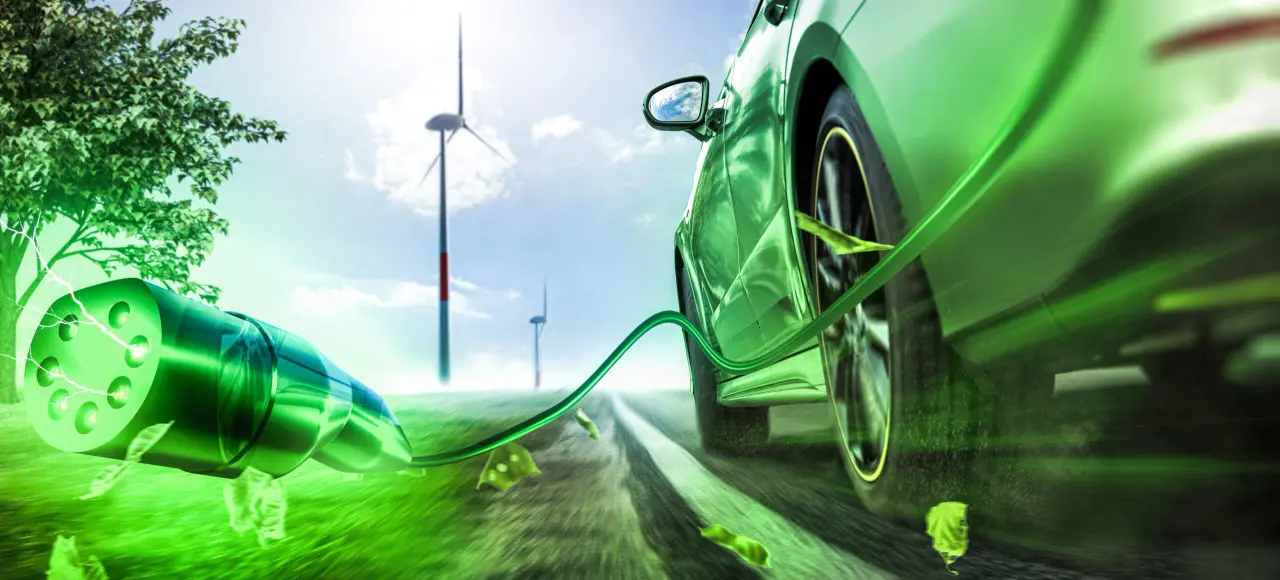There is an urgent need to solve the climate catastrophe as global attention continues to grow. The transportation industry, which is one of the major contributors to greenhouse gas emissions worldwide, is about to undergo a sustainable change.
The transportation sector plays a crucial role in achieving the international climate targets of keeping global warming to 1.5 degrees Celsius, Green Transportation Solutions as it is responsible for more than 25% of greenhouse gas emissions worldwide. Transportation decarbonization is essential to achieving net-zero emissions by 2050.
Innovative Green Transport Technologies to Watch
Eco-Friendly Transportation: A Revolution in Mobility
Utilizing innovative technology, sustainable transportation reduces its negative effects on the environment while maintaining efficiency, safety, and accessibility. Green Transportation Solutions Every transportation industry has a unique set of decarbonization strategies. Developing a transportation infrastructure that serves society and the environment at the same time is the ultimate aim of sustainable transportation.
Road Transportation: Advancements in Light-Duty Automobiles
Private vehicles account for three-quarters of all passenger travel. Four technologies have arisen in the last 20 years to lower carbon emissions from light-duty vehicles: electric power, hydrogen, biofuels, and ultra-efficient internal combustion engines.
For instance, highly efficient engines employ cutting-edge designs to require less gasoline. Green Transportation Solutions We make biofuels from plants and other renewable resources.
Fuel cells can produce electricity by using hydrogen. The electricity grid supplies batteries for electric cars.
Electric Vehicles: The Next Big Thing in Transportation
Reducing carbon emissions with electric mobility is a possible alternative. This industry is advancing. It does, however, need a strong electrical infrastructure, which includes grid connections, quick charging stations, low- or zero-carbon power generation techniques, and efficient transmission systems.
For instance, wind or solar energy can generate power. Smart grids can effectively manage the demand and supply for power. Smart grids may strategically place fast charging stations to ensure the easy charging of electric vehicles, thereby promoting their wider adoption.
Maritime Transport: Improving Freight Transport's Effectiveness
Maritime transport, which also includes moving products internally, abroad, and for fishing, handles over 80% of freight in tons and over 70% of freight in ton-kilometers.
It made up around 3% of the world's greenhouse gas emissions in 2018. Green Transportation Solutions Efficiency improvements have the potential to significantly reduce fuel consumption and environmental impacts.
Digital technology, such as real-time tracking systems, has the ability to optimize routes and minimize needless fuel usage. Additionally, automated systems can reduce port idle time by increasing loading and unloading efficiency.
Read also: Tips for Eco-Friendly Recycling.
Aviation: Cutting Air Travel Emissions
Prior to the pandemic, aircraft contributed 2% of greenhouse gas emissions worldwide, with an annual growth rate of around 4%. Emissions had a notable decline due to the epidemic, but they are already growing once more.
Short-haul flight electrification is considered a viable alternative, and several airlines are investigating blended fuels, which include biofuels and kerosene.
Furthermore, airlines are creating synthetic fuels by combining ammonia or hydrogen with CO2. Green Transportation Solutions These methods might drastically lower the carbon impact of aviation travel.

Rail Transportation: Using Digital Technology to Increase Productivity
When run on clean electricity, rail transportation has minimal environmental impact. Digital technology has revolutionized train operations throughout time, increasing their efficiency and user-friendliness.
Mobile applications, for instance, are digital tools that may provide door-to-door travel options and real-time data on routes, timetables, and delays. As a result, travel is more convenient.
Furthermore, technology such as automatic train operations automates train operations, thereby reducing human error and enhancing productivity.
Simplifying urban mobility with smart cities and intelligent transport systems
Smart cities make use of a range of technology to provide services effectively, with transportation being a crucial component. Intelligent transport systems (ITS) are crucial for optimizing transportation for sustainability and efficiency.
For instance, commuters may avoid clogged routes with the assistance of ITS, which provides real-time information on traffic conditions. Green Transportation Solutions Additionally, they provide information on train occupancy rates, allowing travelers to select trains with fewer passengers.
ITS can recommend the best freight transportation routes and modes, increasing productivity. These instances show how ITS helps create smarter, more environmentally friendly cities.
Improved cycling infrastructure
Although bike lanes have been installed in many US cities to assist those who would rather ride on two wheels rather than four, many of these bike lanes are only painted lines with little to no protective effect for cyclists.
The absence of bicycle-friendly infrastructure discourages people from giving up their vehicles. Green Transportation Solutions Wider bike lanes, segregated from car lanes, not only increase rider safety but also motivate more individuals to choose bicycle commuting.
Read also: what is non renewable resources.
Promote more ride-sharing and carpooling.
Carpooling has many positive social, economical, and environmental effects. Carpooling lowers carbon emissions, eases traffic congestion, and saves fuel costs for individuals.
Even though ride-sharing services and carpooling initiatives have grown in popularity recently, they often only function successfully in densely populated areas.
For instance, it's not too difficult to get an Uber or Lyft in a place like Los Angeles. Green Transportation Solutions However, due to a lack of ride-share drivers, finding a ride might take a while in smaller cities and more rural or suburban locations.

Put money into alternative fuel technologies.
Another excellent strategy for US communities to create more sustainable transportation systems is to invest in greener transportation options, such as alternative fuel technologies.
More funding for initiatives like electric cars and zero-emission vehicles, in particular, may significantly lower carbon emissions. The electric bus is one example of an alternative fuel or rail system that uses electricity rather than gasoline.
In certain regions, natural gas-powered vehicles, such as compressed natural gas (CNG) cars, may be more readily available than electric technology. As such, cities may want to consider utilizing CNG vehicles and buses.
Improve pedestrian-friendly communities.
Making pedestrian-friendly infrastructure a top priority is another method to build greener cities that benefit both the environment and the people.
Creating more pedestrian-friendly communities and neighborhoods will encourage more people to walk, which will naturally contribute to a decrease in the number of automobiles on the road.
Communities that prioritize pedestrians also enhance public transit by improving accessibility to infrastructure. In addition to encouraging increased physical activity, walkable communities support more holistic, health-conscious lives.
Transportation in the Greener Supply Chain
When it comes to the combustion of fossil fuels, transportation used to move items for the supply chain is another significant problem. The freight transportation sector, comprising cars, trains, aircraft, and ships, contributes eight percent of the world's greenhouse gas emissions.
If we don't make significant improvements, we predict that freight transportation will generate the most carbon dioxide by 2050. Thus, the US must take greater action to discover methods of moving raw materials and finished goods as cheaply as possible throughout the supply chain.
Rail has the least environmental impact among all modes of goods transportation. Green Transportation Solutions In addition to having a positive environmental impact, more businesses relying on rail may also help ease traffic congestion.
Read also: Greenpeace: Car makers showing slow progress on decarbonizing
Aviation Decarbonization
Flying is another mode of transportation that could greatly benefit from switching to electric power. Even though the aviation industry currently contributes only 2.5% of world emissions, growth patterns indicate that by 2050, it will become a significant source of carbon emissions.
More funding is required for electric aircraft and sustainable aviation fuels (SAFs) in order to stop this from happening. This encompasses both aircraft used for travel and aircraft used for freight transfer.
Greater accessibility to public transit
The unfortunate habit of viewing public transit systems in the US as social assistance programs has deterred many people from using them. In comparison to other nations, public transit investment has been low. However, if people in America were to view public transportation as a necessary resource, it may make solutions more affordable and efficient.
This comprises:
- We are strengthening the bus infrastructure to increase accessibility to bus service.
- The goal is to extend commuter trains outside of cities to provide accessibility for residents in the suburbs and even in rural areas.
- We should increase the availability of public transportation in small towns and rural neighborhoods overall to reduce the number of individuals who must drive to work in the metropolis.
Inform drivers of greener travel options.
One of the most important components of a successful sustainable transportation plan is teaching people how to travel more responsibly. Green Transportation Solutions While creating sustainable infrastructure takes time, local and federal governments should invest time and funds in informing and motivating the public about how different modes of transportation affect the environment.
It may be quite advantageous to teach drivers how to lessen the carbon footprint they leave behind when they travel. Here are some tips to consider:
- To increase fuel efficiency, pack lighter and more effectively.
- Make more fuel-efficient journey plans.
- Use cruise control to reduce fuel consumption.
- Do not idle.
Conclusion
In conclusion, tackling the climate issue is critical, particularly for the transportation industry, which contributes significantly to greenhouse gas emissions. To keep global warming to 1.5 degrees Celsius, switching to efficient, sustainable transportation systems is essential to cutting emissions and reaching net zero by 2050.
This entails advances in a variety of transportation domains, including rail, road, marine, and aviation, each of which makes a distinct contribution to the objective of a mobility landscape that is more environmentally friendly and sustainable.
Robert C. Brears, the creator of Our Future Water, collaborates with various organizations, including the World Bank's Connect4Climate program and the OECD/World Bank/UNEP's Green Growth Knowledge Platform.
FAQ's: Green Transportation Solutions
What is the most eco-friendly transportation?
Walking and cycling are unquestionably the most environmentally beneficial modes of transportation, as they produce no emissions, require no batteries, and leave no carbon imprint.
How to increase sustainable transportation?
Sustainable mobility solutions use clean fuel, batteries, or both. Alternative fuels can be utilized in flexible-fuel and dual-fuel vehicles, as well as vehicles equipped with modern technologies like hybrid power systems and fuel cells. Alternative fuels help to save fuel and minimize pollutants.
Which transportation is the greenest?
- Electric car: 161 grams of carbon dioxide per mile.
- Horse: 135 grams of carbon dioxide per mile.
- Bus: 100 grams of carbon dioxide per mile.
- Train: 88 grams of carbon dioxide per mile.
- Bike: 33 grams of carbon dioxide per mile.
- Electric scooter: 8 grams of carbon dioxide per mile.
- E-bike: 8 grams of carbon dioxide per mile.
What is the green transportation system?
Green transportation creates a sustainable transportation system that is safer, more comfortable, and ecologically friendly by incorporating low emission, energy-saving, and intelligent transportation technologies.

